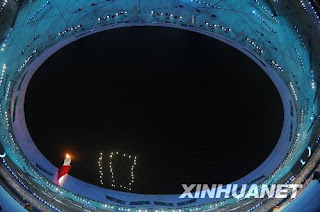
WASHINGTON – With Chinese-made fireworks skyrocketing in price and among many imports being recalled by the U.S. Consumer Product Safety Commission, some local communities are curtailing their Independence Day celebrations or limiting them to parades and less noisy and spectacular daytime activities.
The cost of Chinese-made fireworks is up 10 to 12 percent, according to large U.S. distributors like Atlas fireworks, one of the largest in the Northeast. With rising prices come decreased sales.
Atlas owner Stephen Pelkey saw 2006 sales drop 3 percent over the previous year and expects the downturn to continue due mostly to price, but also to concerns about safety.
Last week, as WND reported, the CPSC recalled more Chinese imports, including fireworks products intended for July 4 Independence Day celebrations.
The recalls included more than 13,000 300 Shot Saturn Missiles Battery Fireworks that the CPSC says can travel in unexpected and dangerous directions, posing special hazards to eyes and bystanders. In addition, the CPSC recalled about 4,000 500 gram mine/shell devices considered unstable and posing burn and other injury hazards.
Almost all fireworks purchased in the U.S. for July 4 celebrations are manufactured in China.
(Story continues below)
Portsmouth, N.H., recreation director Rus Wilson said that town's fireworks display this July 4 will likely be smaller than previous years because of the higher prices.
Some see it is ironic that America's "Independence Day" celebrations would be curtailed because of "dependence" on fireworks from China.
"Americans equate the Fourth of July with celebrating and fireworks," says Julie Heckman, executive director of the America Pyrotechnics Association. "Fireworks are, historically, a symbol of American independence."
But they have also been big business.
Americans spent more than $900 million to purchase fireworks in 2006. Most of that amount was by consumers for backyard displays. Heckman estimates Americans will spent about $925 million this year. But they won't get as much for their money.
The growth in recent years is largely due to the fact that fireworks are now legal in 45 states and the District of Columbia.
As Americans think about ways to celebrate Independence Day, they may want to consider that many Chinese fireworks are produced by slave labor – or near slave-labor conditions.
Recently, even the official Chinese media reported 468 slaves freed from deplorable conditions in which dozens died. Some 120 were arrested in a four-day crackdown on slave industries that include the production of fireworks. Many of the slaves were children, some as young as 8, who had been kidnapped. The slaves were near starvation and many had been beaten.




















